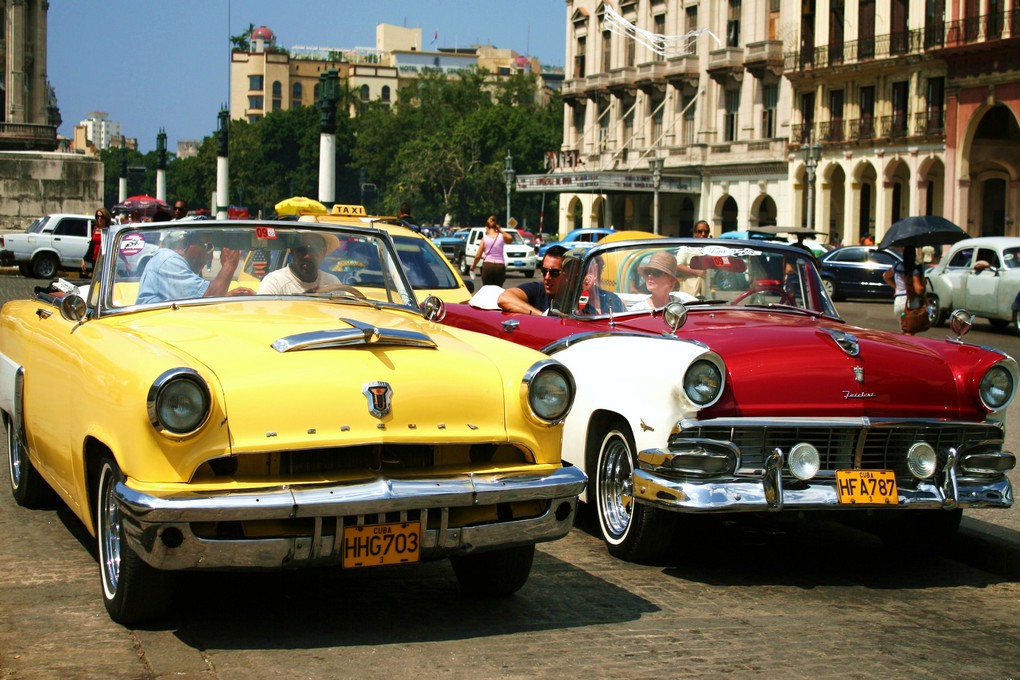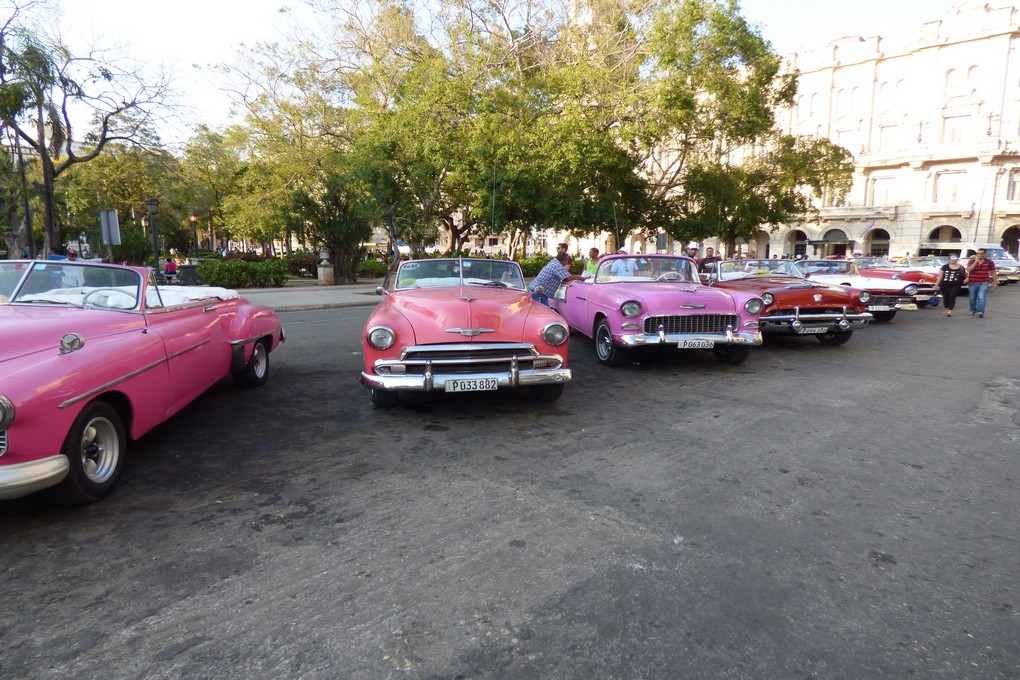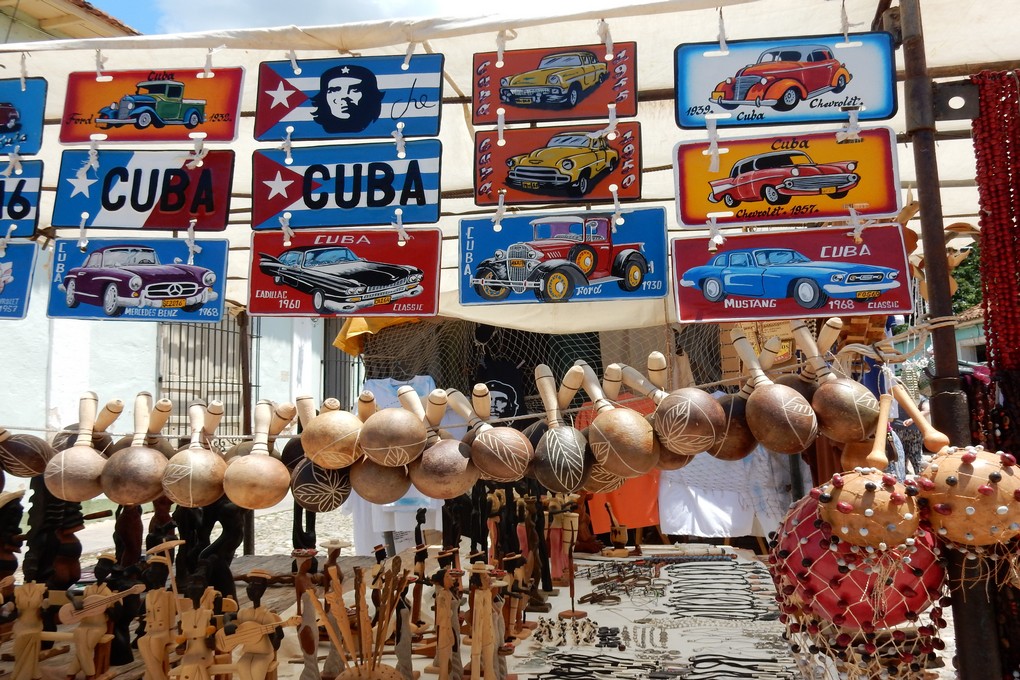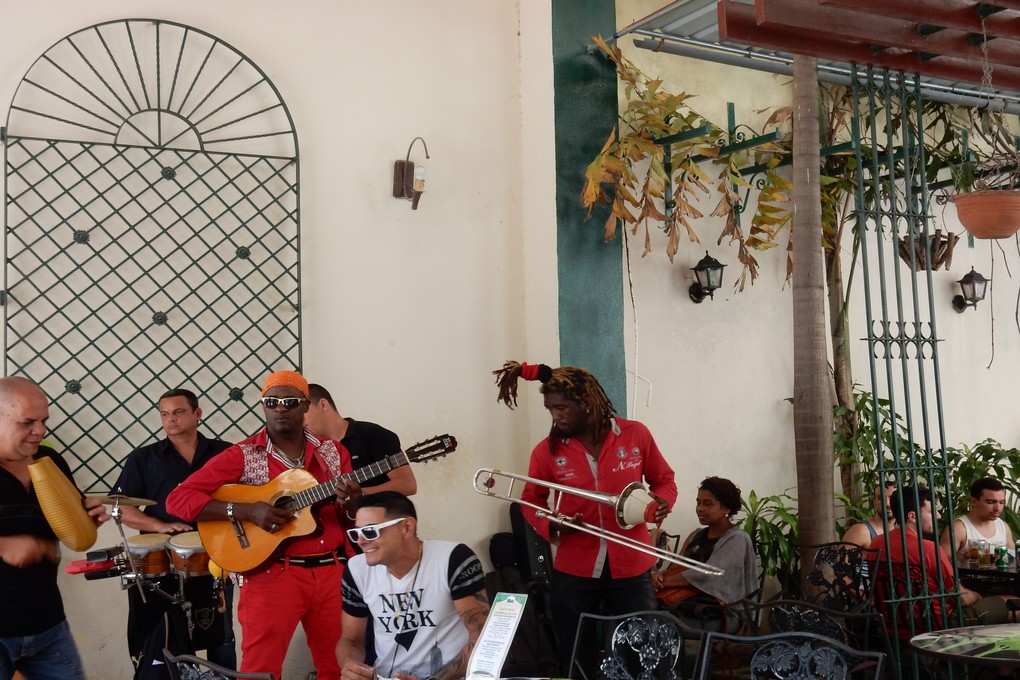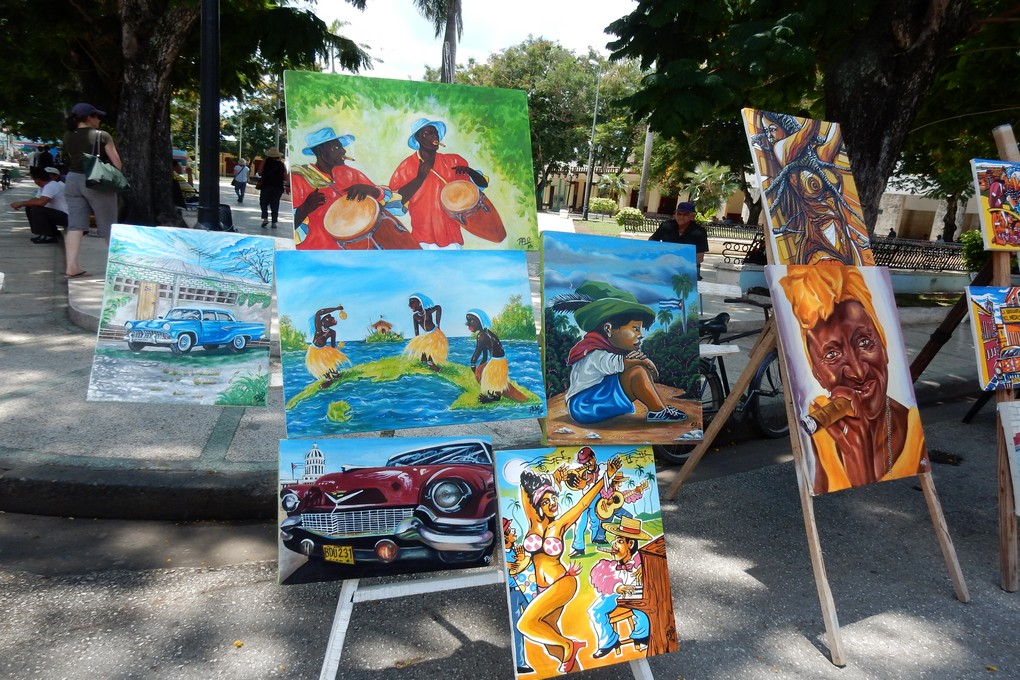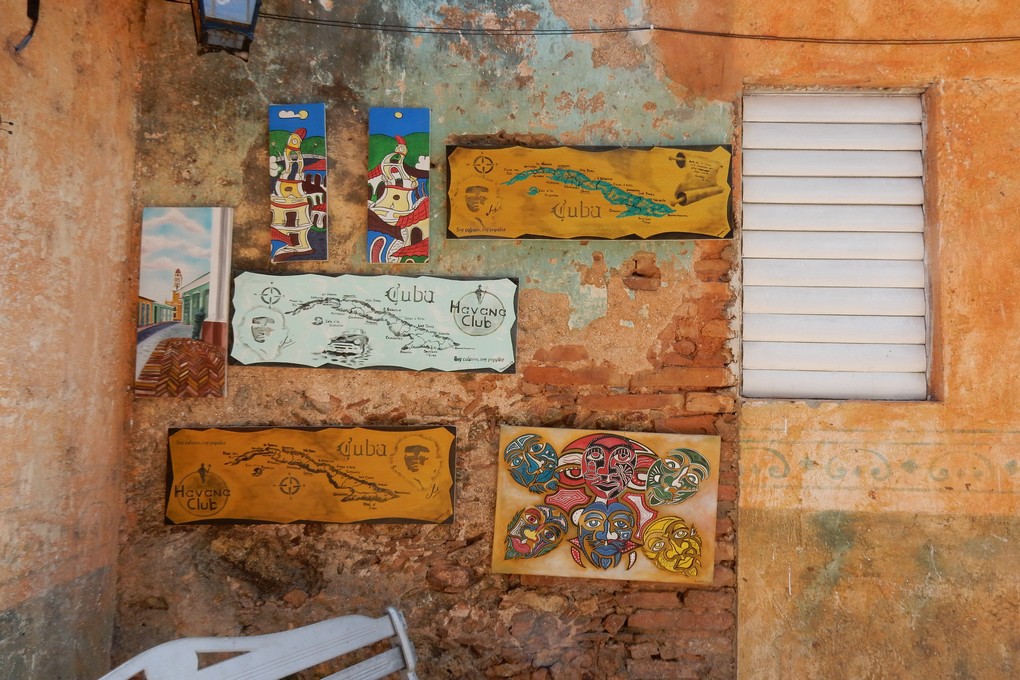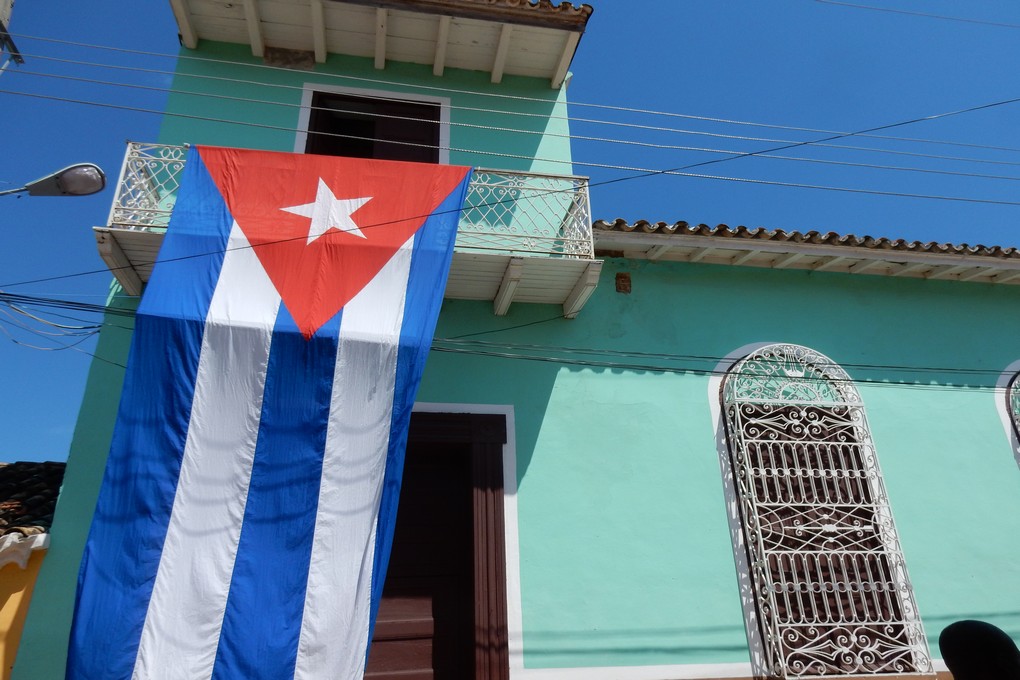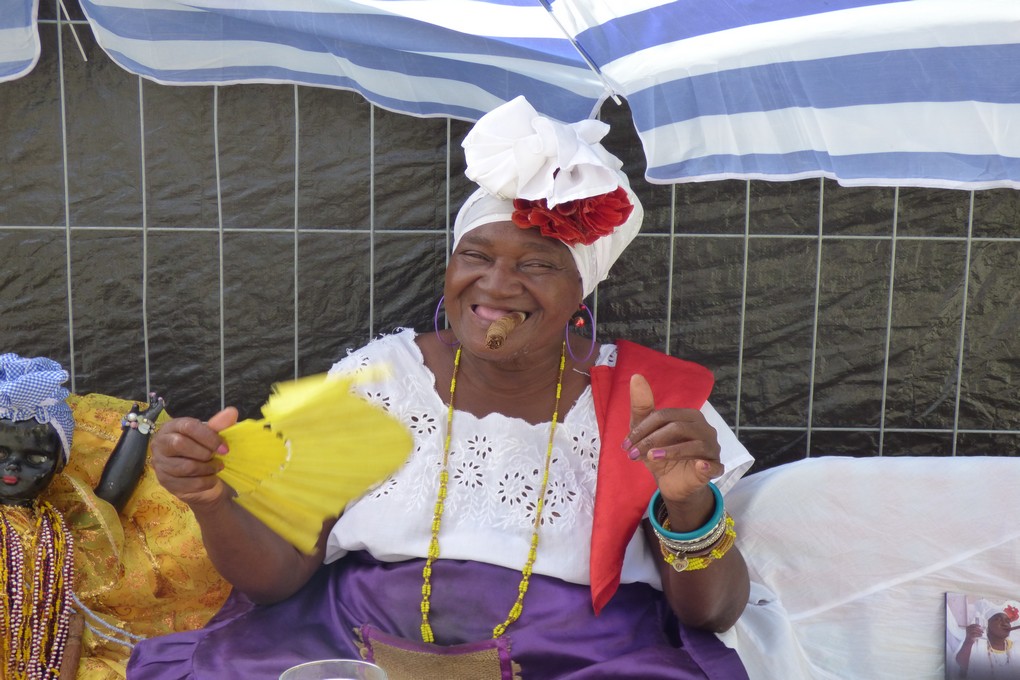Cuba is hot hot hot
Ruby red, mellow yellow, hot pink, cobalt blue, lime green or sunburnt orange – the choice is just too hard when it comes to selecting a vintage car for a city tour of Havana.
I’m staring at a lollipop array of shiny American convertibles fitted with more make shift parts than the number of Cuban bars that claim famed author Ernest Hemingway drank there.
Buicks, Chevrolets, Oldsmobiles and Ford Fairlanes are polished within an inch of their lives and lined up in front of the grand El Capitolio, a former house of government that is now home to the Academy of Sciences.
While other tourists stand and consider the make and year of these spotless beauties on four wheels, I go by colour alone.
Our local guide, Maria, selects a hot pink and white 1952 Chevrolet Bel Air and I can’t hide my delight.
Our driver, who insists we call him Davo, is justly proud of his “baby.”
“This is third generation,” he states proudly as he passes me an album of the car’s best angles and glamorous passengers whom I suspect may have been snipped from a magazine and superimposed.
Davo explains the history of his car while polishing the door handles one last time, before we head off on our adventure.
“This car was my grandparents then the American trade embargo stopped Cubans from buying new cars, so old cars became precious and now it is mine, so sit back and enjoy the ride,” Davo says.
It is a little like being in a time warp in a 1952 model car passing blocks of derelict grandiose buildings with crumbling exteriors and peeling paint. But much of the faded beauty remains evident and it doesn’t take long to become mesmerised by all we see.
Maria brings history to life in Revolution Square that has been the scene of huge political rallies including addresses by Fidel Castro. There’s also an emblazoned face of suave Cuban Revolutionary Che Guevara as well as an 18m statue of national hero, Jose Marti.
Malecon
A drive along the famous sea-skirted Malecon that stretches for 8kms along the coast provides a snapshot of local families –the elderly walk arm in arm, parents carry children on their shoulders and push prams while teenagers swagger to loud music and youngsters swap baseball cards.
Maria shares much about Cuban life where everyone receives a ration card, doctors are often paid just $60 a month and tourism guides and taxi drivers can earn much more.
“Cuba is changing but we are hopeful it will alter for the better preserving all we love about it,” Maria says as we farewell Davo and sip a Mojito on the seaside terrace of the historic Hotel National.
It was here that tense scenes were played out between the US and the Soviet Union during the Cuban Missile crisis of 1962 and there’s a museum capturing those times.
But don’t restrict yourself to museums and art galleries – walk the streets to get a real feel for Havana.
We pass older women with rollers in their hair, young women wearing Lycra a few sizes too small, boys playing soccer and girls patting cats.
Dance
No matter what age – Cubans are born to dance and it seems there is a bar on every corner with a band playing the popular and catchy song, Guantanamera that’s about a peasant girl from Guantanamo.
Most bars claim that Hemingway once raised a glass there but the most popular, La Floridita and La Bodeguita del Medio can prove it and tourists flock there to do the same.
For a day out head to the pretty agricultural area of Vinales about two hours’ drive from Havana, where you will find tobacco farms, fresh produce and quaint coloured wooden houses.
We stroll along rural dirt roads and watch as tractors, vintage cars and horse-drawn carriages roll by.
For lunch we stop at one of the quaint cafes that serve the freshest produce just picked from nearby gardens and again listen to the music.
Later we visit a tobacco farm and see how it is processed by hand, dried, then hand rolled into cigars, some of which bring big money for top shelf products.
But it is back in Havana where you will see the fattest cigars – they are usually displayed by a group of women larger than life with a penchant for bright clothes and jewellery, who can also tell your fortune. You won’t miss them in Old Havana.
As for the question on everyone’s lips – how will Cuba change now the US sanctions have been lifted – who knows?
But for now, there’s a sweeping tide of US tourists arriving daily – so don’t leave it too long to catch a ride with Davo and his pink and white baby.
The writer was a guest of Intrepid Travel and Urban Adventures.
TRAVEL FACTS
Getting there
Qantas flies to Santiago de Chile and then codeshares to Havana or fly to Mexico City from Sydney, then to Havana with codeshare airlines. www.qantas.com.au
Tour: Intrepid Travel’s Best of Cuba is a 15-day small group tour from Havana return, travelling along the southern coast to Baracoa. Price starts from $2103, including 14 nights accommodation in local guesthouses, transport, domestic flight, breakfasts, with free time and activities such as salsa and Spanish lessons and walking tours. www.intrepidtravel.com/cuba
Day Tours: Urban Adventures is for those who want to get off the beaten path. urbanadventures.com

